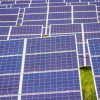Researchers from the Wisconsin HTS Asymmetric Mirror (WHAM) experiment have made a groundbreaking advance toward realizing clean, carbon-free fusion power. Led by University of Wisconsin-Madison physics professor Cary Forest, the team achieved a significant milestone by generating plasma with the strongest steady magnetic field ever applied in such a device.
On July 15, 2024, they successfully formed and sustained plasma at a magnetic field strength of 17 Tesla using high-temperature superconductor (HTS) magnets, which is more than double the strength of the magnets used in high-resolution MRI scanners. This accomplishment marks a world record for magnetically confined plasmas and is a critical first step toward viable fusion energy.
The WHAM project is a four-year collaborative effort that includes Realta Fusion, a UW-Madison spinoff, the Massachusetts Institute of Technology (MIT), Commonwealth Fusion Systems (CFS), and the US Department of Energy.
The team has revitalized the magnetic mirror concept, a method of confining charged particles that was a leading approach in fusion energy research in the US until the 1980s. Advances in superconductor technology, particularly HTS magnets, have allowed WHAM to overcome the limitations that previously hindered the control of magnetically confined plasma.

In the WHAM device, two powerful magnets are placed at either end of a cylindrical chamber to compress the plasma, causing hydrogen ions to bounce back and forth. This increases the likelihood of fusion reactions as the ions collide.
The experiment is not only setting a world record in magnetic field strength for magnetically confined plasmas but also serves as a hands-on learning experience for both graduate and undergraduate students, according to Dr. Jay Anderson, co-founder of Realta Fusion and a UW-Madison scientist.
The success of the WHAM experiment has significant implications for the future of fusion energy, potentially leading to more compact and lower-cost fusion systems. As a public-private partnership between UW-Madison and Realta Fusion, the project aims to commercialize mirror fusion, with Realta Fusion CEO Kieran Furlong highlighting the demonstration as a major step towards economically viable, zero-carbon heat and electricity.
The company is part of the Department of Energy’s milestone funding program, which seeks to accelerate the development of commercial fusion energy, similar to NASA’s approach to private space exploration.
Looking ahead, Realta Fusion plans to develop two demonstration reactors. The first reactor, Anvil, will expand on WHAM’s design to provide additional data and material testing capabilities.
The second reactor, Hammer, will feature an evolved design with multiple magnets, potentially enabling longer reactors with increased power output. The WHAM team will continue to address key challenges in plasma stability, confinement, and efficiency, with their findings playing a crucial role in determining the practicality of magnetic mirror fusion as a sustainable energy source.

